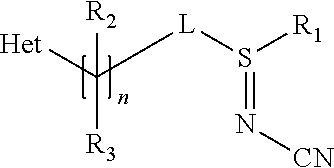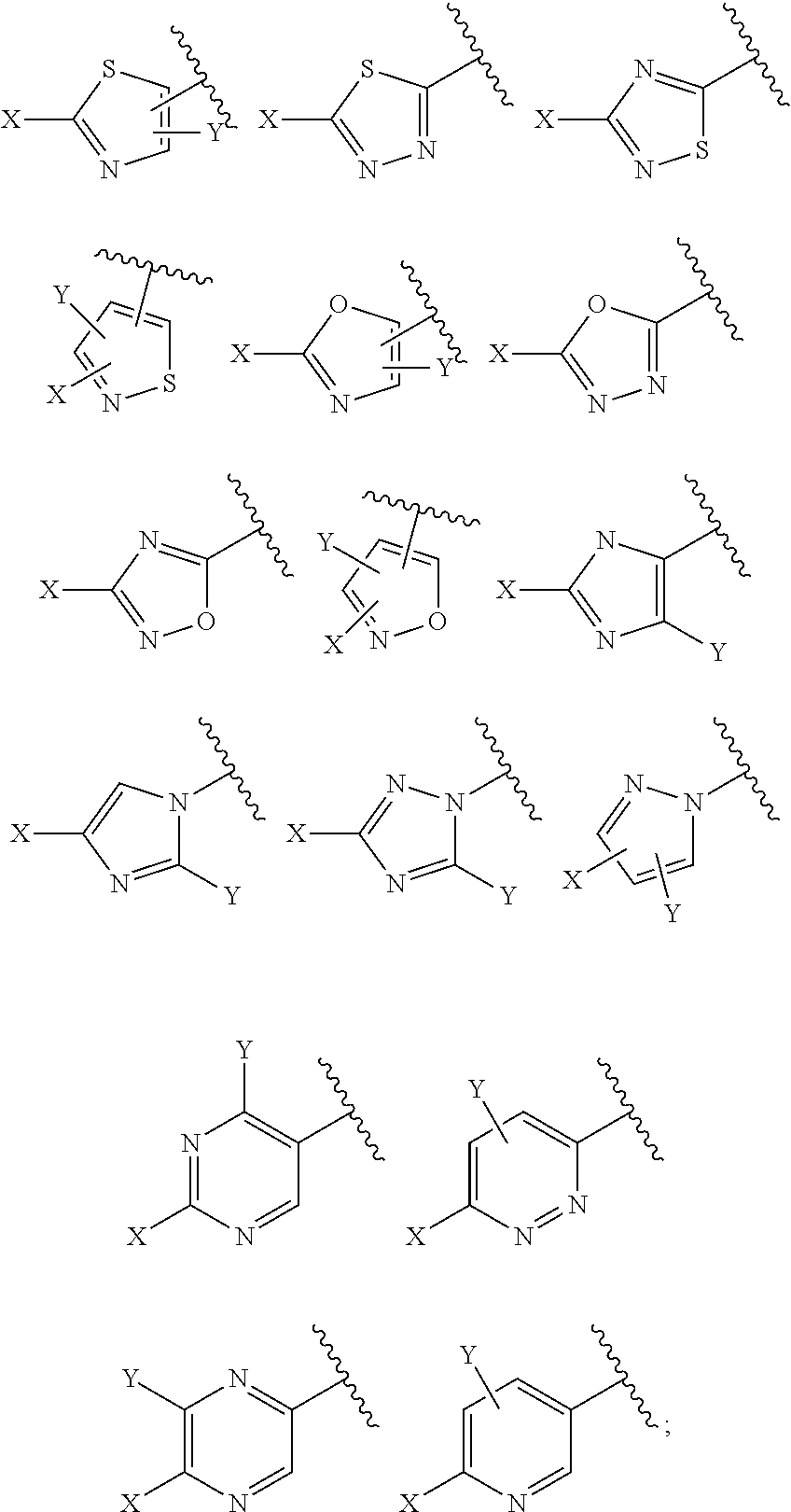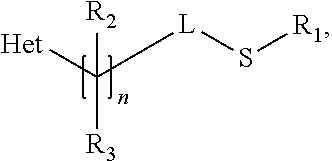Methods of producing sulfilimine compounds
a technology of sulfilimine and compound, applied in the field of methods of producing sulfilimine compounds, can solve the problems of waste disposal problems and high cost of iodobenzene diaceta
- Summary
- Abstract
- Description
- Claims
- Application Information
AI Technical Summary
Benefits of technology
Problems solved by technology
Method used
Image
Examples
example 1
Preparation of N-cyano-S-methyl-S-[1-(6-trifluoromethyl-3-pyridinyl)ethyl]sulfilimine: 5-[1-(methylthio)ethyl]-2-trifluoromethylpyridine pre-treatment
[0038]The starting sulfide compound was pre-treated with base to remove acidic compounds. 5-[1-methylthio)ethyl]-2-trifluoromethylpyridine was dissolved in hexane and washed with an equal volume of 1% aqueous sodium hydroxide (NaOH). The resulting organic phase was evaporated and the remaining oil used as feed for the sulfilimine reaction. The above treated 5-[1-methylthio)ethyl]-2-trifluoromethylpyridine, 10.6 g (about 0.045 moles) was mixed with 39.2 g of acetonitrile and 5.06 g (0.059 moles) of 50% aqueous cyanamide in a 250 ml flask equipped with electric stirrer (half moon agitator), thermowell, nitrogen pad, and addition funnel. Using a bath the flask was cooled to −7° C. A 6.14% solution of sodium hypochlorite (68.1 g, 0.056 moles) was slowly added over 88 minutes, keeping the temperature at −7° C. After a 35 minute post reactio...
example 2
Preparation of N-cyano-S-methyl-S-[1-(6-trifluoromethyl-3-pyridinyl)ethyl]sulfilimine: Sodium Dihydrogen Phosphate and Base Addition
[0039]An acid (sodium dihydrogen phosphate) was added to the mixture to simulate the effects of low levels of acid in the sulfide feed stream. Cyanamide (1.4 molar equivalents relative to the 5-[1-(methylthio)ethyl]-2-trifluoromethylpyridine), water, and 2 mole % of the sodium dihydrogen phosphate were mixed until homogeneous. ACN and the sulfide feed stream (5-[1-(methylthio)ethyl]-2-trifluoromethylpyridine (94% purity)) were then added. The mixture turned cloudy, indicating precipitation of some of the sodium dihydrogen phosphate. The mixture was cooled to the desired reaction temperature and 1.25 molar equivalents of 13% sodium hypochlorite was slowly added. Additional oxidation reactions were conducted, adding sodium carbonate (Na2CO3) or NaOH along with the sodium dihydrogen phosphate. All oxidation reactions used 1.4 molar equivalents of cyanamide...
example 3
Preparation of N-cyano-S-methyl-S-[1-(6-trifluoromethyl-3-pyridinyl)ethyl]sulfilimine: Base Addition
[0041]A sulfide feed stream known to include acidic impurities was titrated with dilute NaOH and found to contain about 3.2×10−5 moles of acid / gram. The cyanamide was titrated with dilute NaOH and found to contain about 2.01×10−5 moles of acid / gram. Thus, for the oxidation reaction of 5-[1-(methylthio)ethyl]-2-trifluoromethylpyridine with cyanamide and sodium hypochlorite (13%) conducted on a 0.047 mole scale, the total moles of acid in the mixture was 0.00041 moles. The effect of adding NaOH to the mixture to neutralize the acidity in the sulfide feed stream and the cyanamide was determined. The NaOH was added as a 25% aqueous solution and stirred for about 5 minutes before adding the sodium hypochlorite. The results are summarized in Table 2.
TABLE 2SulfilimineSulfoxideRunMolesCompoundcompoundNumberNaOH(% Yield)(% Yield)1None89.37.8520.0013091.25.8230.0006491.55.81
[0042]Table 2 indic...
PUM
 Login to View More
Login to View More Abstract
Description
Claims
Application Information
 Login to View More
Login to View More - R&D
- Intellectual Property
- Life Sciences
- Materials
- Tech Scout
- Unparalleled Data Quality
- Higher Quality Content
- 60% Fewer Hallucinations
Browse by: Latest US Patents, China's latest patents, Technical Efficacy Thesaurus, Application Domain, Technology Topic, Popular Technical Reports.
© 2025 PatSnap. All rights reserved.Legal|Privacy policy|Modern Slavery Act Transparency Statement|Sitemap|About US| Contact US: help@patsnap.com



